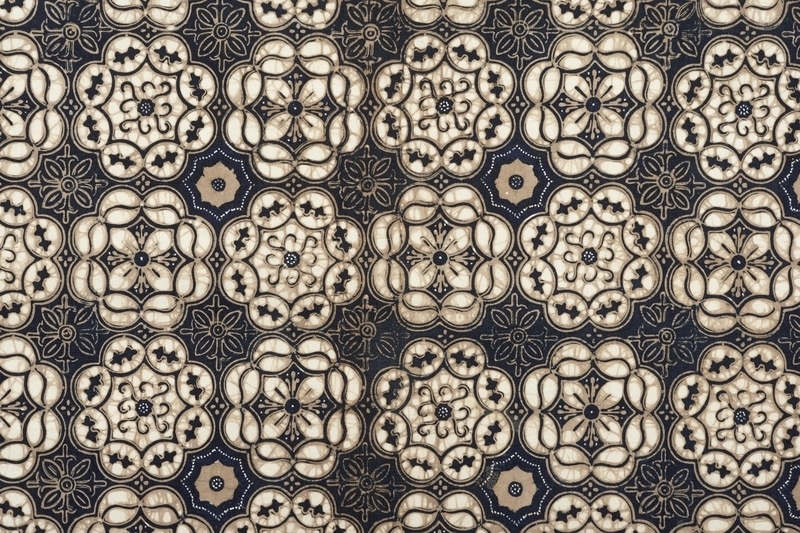Cloth Item Number: Ib381 from the MOA: University of British Columbia


Description
Rectangular cream cotton batik with linear pattern of floral designs consisting of two repeated and alternating flowers. Blue and brown flowers and shapes between. Long sides are selvedges, ends have a narrow cream and mottled brown border and are stitched.
History Of Use
Java is an important batik producing area. Although wax or paste resist dyeing is probably quite ancient on Java, the intricately detailed batiks on fine cotton cloth are relatively recent (16th century). The development of Javanese batiks is probably associated with a general flowering of the creative arts around the courts of the central princedoms of Surakarta and Jogjakarta. In Indonesia, textiles have great social and spiritual significance. They were exchanged and displayed in important ritual contexts. Traditional batik patterns and colour choices reflected local preferences and social distinctions. Local dyes could be distinguished and many patterns were restricted in use by rank, family and occasion. With the advent of the export trade, the relaxing of social restrictions, the introduction of chemical dyes and of batik manufacturing, many of these distinctions have disappeared.
Iconographic Meaning
General name for a geometric floral pattern is tjeplok or tjeplokan.
Cultural Context
worn as a skirt
Narrative
For the most part, Indonesian clothing is based on a rectangle, which is draped over the body or sewn in a tube. Additional rectangles are used for belts, mantles and head cloths etc. 'kain pandjang' worn by both men and women is a skirt, wrapped around the hips and knotted and/or belted at the waist.
Item History
- Made in Yogyakarta, Java, Indonesia ? before 1980
- Collected before 1980
- Owned by Dorian Rae before October 31, 1980
- Received from Museum of Anthropology Shop Volunteers (Funding source) and Dorian Rae (Seller) on October 31, 1980
What
Who
- Culture
- Javanese
- Previous Owner
- Dorian Rae
- Received from
- Museum of Anthropology Shop Volunteers (Funding source) and Dorian Rae (Seller)
Where
- Holding Institution
- MOA: University of British Columbia
- Made in
- Yogyakarta, Java, Indonesia ?
When
- Creation Date
- before 1980
- Collection Date
- before 1980
- Ownership Date
- before October 31, 1980
- Acquisition Date
- on October 31, 1980
Other
- Item Classes
- textiles
- Condition
- good
- Accession Number
- 0677/0016